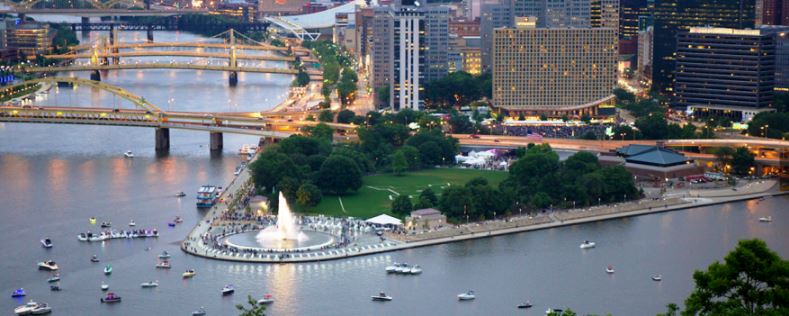As towns large and small along the Ohio River struggle to rebuild their economies, many are trying to attract more industry.
But some places are realizing that embracing the recreational side of their riverfronts can also be a key engine for growth.
The decline of industry was devastating to the region’s economy, but one positive side effect is that more people hang out on the river here. The loss of dirty industries, along with the federal Clean Water Act, has helped restore the Ohio River. Even shad, a fish that’s very sensitive to pollution, have returned after a long period of local extinction.
“We’ve been working to make the river an exciting cultural place for the city,” says urban designer Nina Chase, who works with a nonprofit called Riverlife. Her organization has overseen the development of a system of parks and trails along Pittsburgh’s riverfronts. With a price tag of $130 million, it hasn’t been cheap.
But Chase says it was a wise investment: “That $130 million in investment has actually triggered $4.1 billion in investment in riverfront and adjacent riverfront development projects downtown.”
Riverlife was formed in 1999 by people who saw the opportunity to create a plan for the redevelopment of Pittsburgh’s downtown riverfronts. They conducted hundreds of public meetings and gathered feedback from thousands of residents and visitors, asking: “What would you like to see along Pittsburgh’s riverbanks?”
Working from the feedback of the community, Riverlife released a vision plan in 2000 for a downtown riverfront park system called Three Rivers Park. Piece by piece, working with land owners, developers, neighborhood groups and elected officials, the Three Rivers Park vision is being realized. Through Riverlife’s leadership, more than 80% of the 13-mile Three Rivers Park loop has been established and improved for public use.
Riverlife has led a $129 million investment in creating Three Rivers Park over the past 15 years. That investment helped catalyze nearly $4.1 billion in total riverfront and adjacent development in downtown Pittsburgh. In addition to real estate development, that also means new public trail connections, parks and amenities on Pittsburgh’s riverfronts.
Now, Riverlife is trying to bring Pittsburgh’s recreational vision downstream to smaller communities. They recently received a grant from the Benedum Foundation (which also funded this series on the Ohio River). Chase says Riverlife is trying to encourage a culture of recreation all along the Ohio River. And they aren’t alone.
See (and listen to) full West Virginia Public Broadcasting article by Glynis Board.

